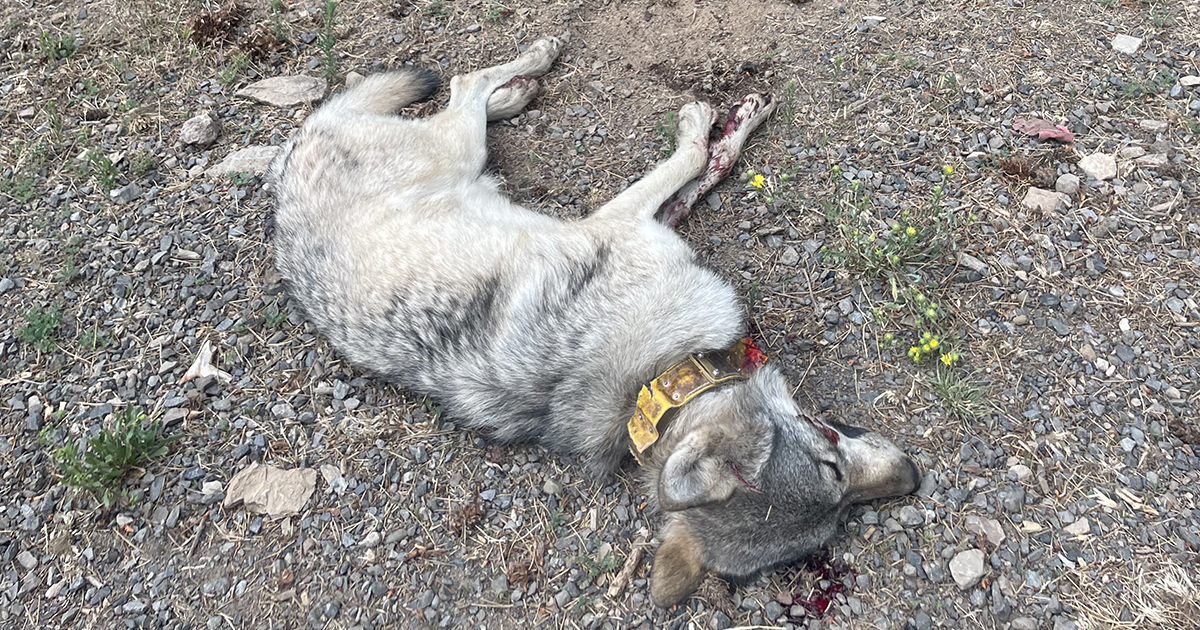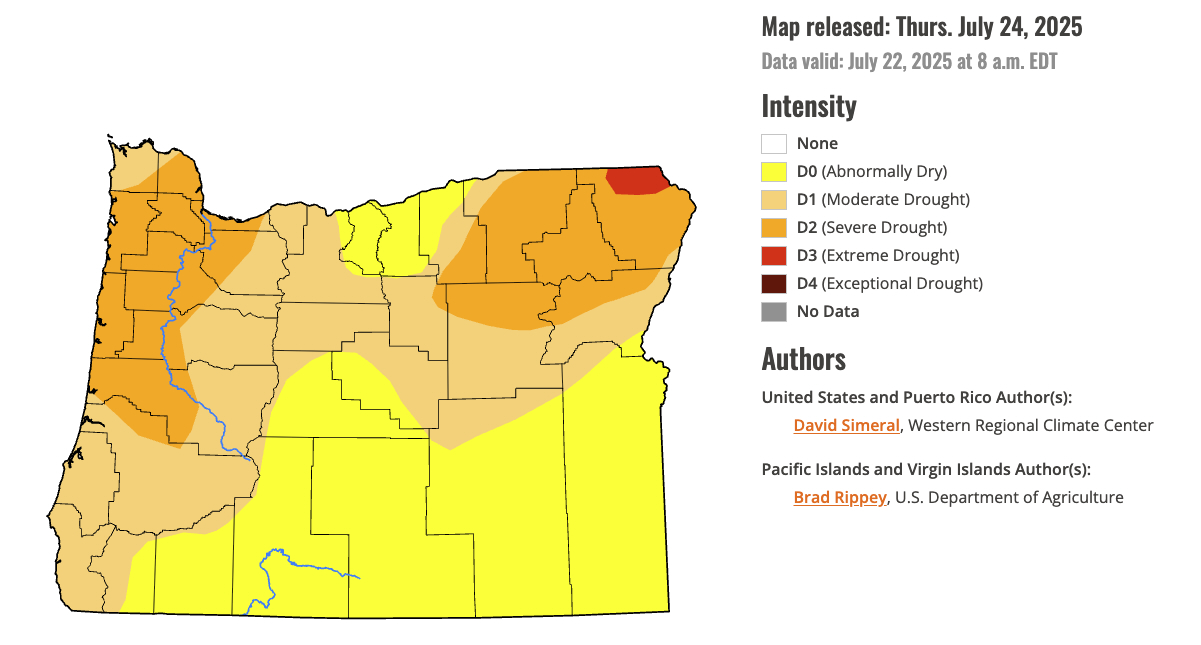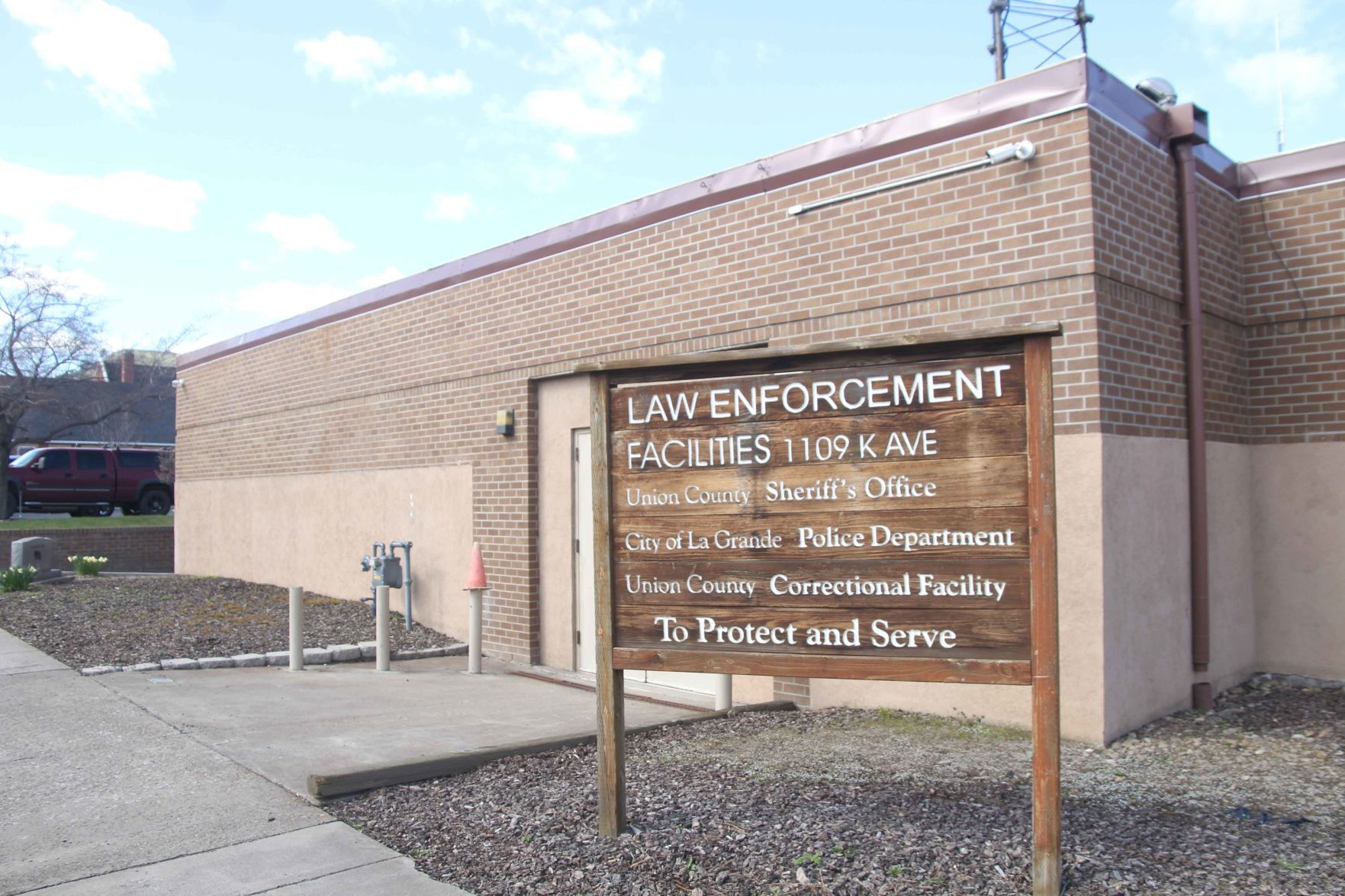Out and about: Pondering the mysterious ponderosas of Big Creek
Published 3:00 am Saturday, March 30, 2024

- Jacoby
It is the greenest ponderosa pine I’ve ever seen.
Trending
My eyes insisted this is true.
I can offer no scientific evidence to support the claim, to be sure.
And I concede it’s possible, and perhaps even likely, that if this particular pine were placed among a grove of its species, as an individual it would be no more conspicuous than a pedestrian on the teeming sidewalks of Manhattan.
Trending
But this pine stands out because of where it’s growing.
Botanically speaking, there shouldn’t be a ponderosa pine on the slope in northern Baker County near where Big Creek flows into the Powder River.
This is a dry land.
Lying in the rain shadow cast by the Elkhorn Mountains, the peaks of which can be seen from the plateaus, the Powder River Canyon is deficient even in junipers, typically the lone conifer capable of tolerating this level of aridity.
Trees — willows, mostly — are abundant only within the slender strip of foliage beside the perennial streams.
And in this area there are just two of those — Big Creek and the Powder River.
My wife, Lisa, and I have walked past this ponderosa several times.
Possibly we’ve even remarked about its curious placement, although I don’t recall such a conversation.
In any case I hadn’t really pondered this pine, or ruminated on its improbability, until our hike on the pleasant late morning of March 23.
We parked as usual at the cattle guard on the rim of the Big Creek Canyon.
The road descends into the canyon but it’s steep and studded with boulders (although it’s not quite as rough as it was before lightning sparked a fire about a mile to the northwest on July 31, 2022, prompting fire crews to take a bulldozer down the road and slightly improve the worst places).
Regardless of the road’s condition, when Big Creek is swollen with snowmelt, as was the case that day, trying to ford it with our Toyota FJ Cruiser would inevitably end with a bill for towing and extensive water damage.
The pine, roughly 15 feet tall and maybe a foot through the middle of its trunk, stands on the south side of the road about halfway between the cattle guard and Big Creek.
Any conifer would be noteworthy here.
But a ponderosa particularly so.
Both Lisa and I remarked, almost simultaneously, that its long needles seemed abnormally green.
I was reminded of those air fresheners people hang from their rear-view mirrors — their shade of green as unnatural as the pine scent concocted by chemists rather than by nature.
Lisa noted that the pine seemed to be thriving, even though some of its roots have been exposed by erosion on the road’s steep cutbank.
Indeed, we didn’t see a single needle that was anything but vibrant green.
Most ponderosas, I’ve noticed, bear at least a smattering of rusty red needles.
But then most ponderosas grow in groves, where they compete with their neighbors for sunlight and for nutrients and water in the soil.
This pine, though, had no such disadvantage.
I suspect the surrounding vegetation — sagebrush and grass, mainly — has a comparatively puny appetite for the ingredients that an evergreen tree needs.
As we continued hiking toward Big Creek I wondered aloud where the nearest other ponderosa — the source of a seed — might grow.
Not far, as it turns out.
A few minutes later, as we reached the Big Creek ford, we saw the other pine — the parent pine — a few hundred yards downstream.
This ponderosa is no sapling.
It is a proper pine, its bole nearly bereft of limbs for the first 20 feet or so. I put its height at about 50 feet, and its age at several decades at least.
We followed a deer and cattle trail along a steep slope toward Big Creek’s confluence with the Powder. From this perspective we could see that the Big Creek ponderosa grove — a grandiose name, to be sure, but I felt it appropriate — consisted of four trees.
Besides the mature pine and the one beside the road, there were two others, both smaller than the typical Christmas tree. One, like its parent, is on the west bank of Big Creek, the other on the opposite side.
Although the largest pine explained the three others, all of which were close enough that a bird or squirrel could easily have dropped a seed, the greater mystery remained.
How did the original seed, the one that produced the parent pine, get there?
Lacking resources such as a helicopter, I can’t say with precision the distance to the nearest ponderosa forest. But it’s several miles.
The source could have been a domestic rather than wild pine — one planted beside a home.
But the closest of those is also some miles distant.
Ponderosa seeds are pretty portable, of course, posing no great burden even to a diminutive bird.
And I suppose a seed might also have been propelled for many miles by Big Creek, which heads in the Wallowas and, during the snowmelt season, deserves its name, unimaginative though it is.
As we hiked I thought of other, seemingly misplaced ponderosa pines I’ve seen.
One grows in a grove of junipers near Hibbard Creek, west of Brownlee Reservoir between Huntington and Richland. Its presence is more a curiosity than a mystery, since there are other ponderosas relatively close.
So, too, with a few pines Lisa and I saw during a recent hike near Durkee. They were growing amid junipers as well, but there are plenty of pines in the general vicinity. We were surprised to find pines growing at relatively low elevations. Ponderosas, although better able to tolerate aridity than other pines and firs, generally need at least 12 inches of annual precipitation, on average, a threshold, in Baker County, that typically is reached at elevations above about 3,500 feet.
The elevation at the Big Creek/Powder River confluence is 2,800 feet. I’m sure the proximity to the stream, and the comparatively damp soil there, has contributed to the survival of the oldest pine along Big Creek.
The provenance of the pines wasn’t the only compelling part of our 90-minute hike, all on public land managed by the BLM (there is much private property in the area, and visitors, whether on foot or in a vehicle, should be scrupulous in making sure they don’t trespass. Also be especially cautious with any potential sources of sparks that can quickly ignite a fire in this arid country, including motor vehicles).
A hundred feet or so before Big Creek melds with the Powder, we found significant evidence of beaver activity. The rodents had gnawed away some streamside willows, and we saw some patches of mud, along the Powder itself, that looked like they might have been places where beavers congregate.
Just below the confluence is the diversion dam for the Emele Ditch, which brings Powder River water to parts of the Keating Valley.
We followed another deer-cattle trail down the river for half a mile or so. A road drops to the river here.
We hiked the road to the first switchback then struck off through the sagebrush, climbing a south-facing slope where buttercups and purple and white phlox are beginning to bloom.
At the top of the ridge, with our rig in view to the north, we saw a plump yellow-bellied marmot bumbling through the sage. I at first mistook it for a badger, as both are low-slung and have awkward gaits.
But once the marmot — rockchuck, in the local vernacular — paused atop the rimrock, it was easy to identify with binoculars.
Badgers, in my experience, don’t like to expose themselves, to hawks or to hunters with rifles, as the marmot did.
But then badgers are diggers — as dogged, in their preference for subterranean living, as beavers.
If You Go
The Powder River Canyon is nothing like as immense as the nearby Hells Canyon, but it is a significant chasm just the same.
The canyon, which starts below Thief Valley Reservoir, continues for several sinuous miles to the Keating Valley. Highway 203 crosses the Powder River just east of the canyon’s mouth.
The canyon is relatively inaccessible, both because there are few roads and because much of the land is privately owned. The hiking route described in the column, however, is solely on public land, and the road, except when muddy, is accessible to SUVs.
The route is via Highway 203, the Medical Springs-Union highway. If you’re coming from Union or points north, the junction is just south of Miles Bridge Road. If you’re coming from Baker City, turn left (west) a few hundred yards past the highway bridge over the river. The junction is near Milepost 28.
Follow the dirt road west for about 2.3 miles to a cattle guard (the first cattle guard is much closer to the highway) on the rim of the Big Creek Canyon. The road does not have a sign. Other signed roads that also lead west from Highway 203 toward Big Creek, including Gene Harsin Road and Bowman Lane, are not public access routes.









